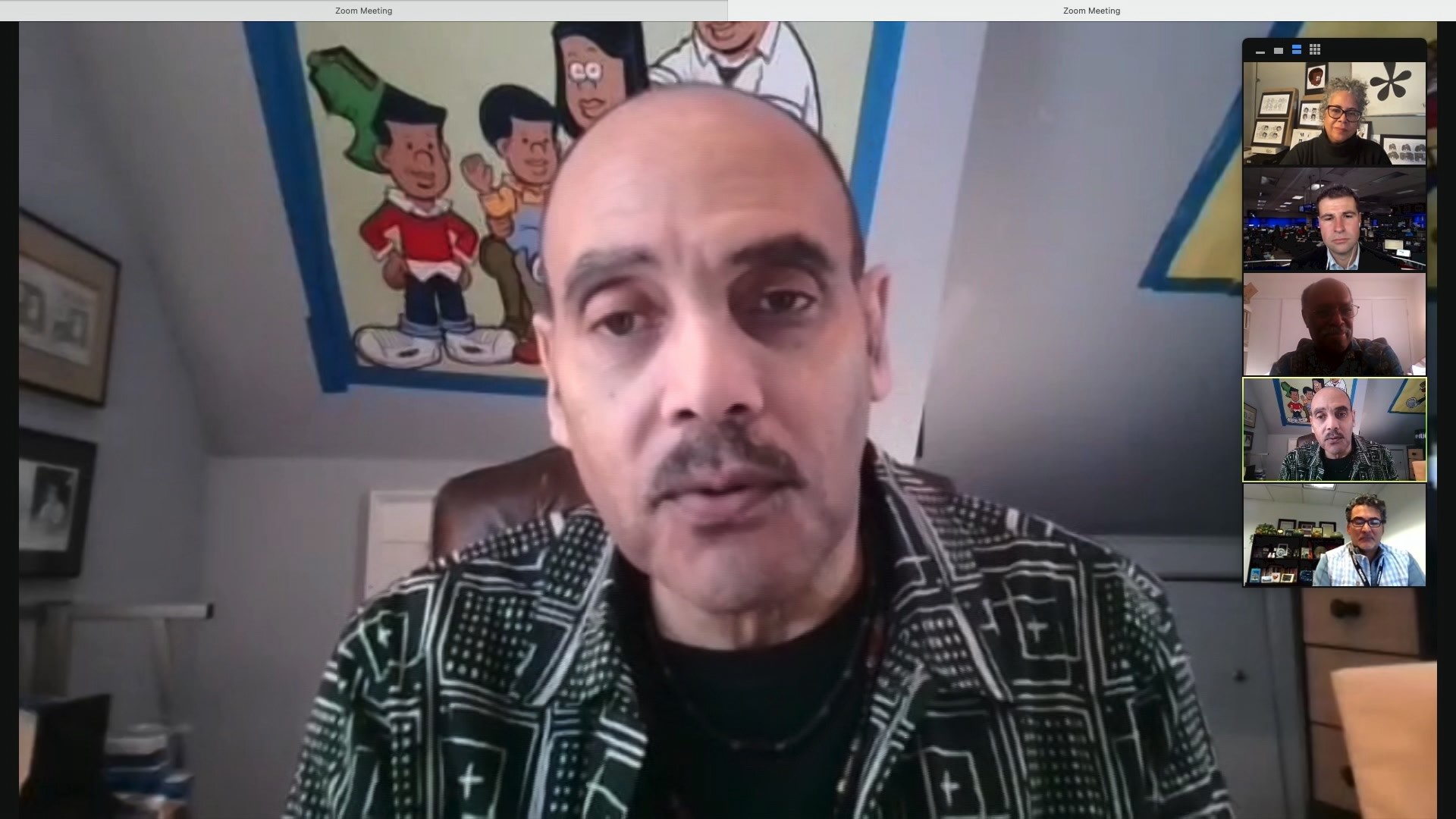DENVER — Black cartoonists have been working to use their art to speak up about underrepresented minorities in the media and on comic strips.
That's according to two cartoonists and a journalist who joined 9NEWS to talk about the lack of authentic representation and diversity in mainstream comics.
The panel was formed by Richard Prince, Barbara Brandon-Croft and Ray Billingsley.
They said they want to use their work to educate and inform because comics don't just have to be funny, some can be used to help people understand underrepresentation and racism in America.
Some of their work has been widely syndicated in mainstream newspapers with a racially and ethnically mixed cast of characters.
Prince is a veteran journalist who has been in the game for decades. He is a columnist on diversity issues in the news business, political editorial content and organizer of The Journal-isms Roundtable.
He also talked to 9NEWS about how he thinks Black cartoonists can help influence society and increase representation.
Brandon-Croft is best known as the first nationally syndicated African-American female cartoonist. She is the daughter of the famous artist Brumsic Brandon Jr. who was also a cartoonist and the creator of the comic strip Luther.
Brandon-Croft will release a new book in 2023. It's a collection from her strip, "Where I'm Coming From," which features characters such as Lekesia the activist, and man-dependent Sonya.
Ray Billingsley won the National Cartoonist Society Award for Cartoonist of the Year for his work on the popular syndicated comic, Curtis. It's the cartooning profession's highest honor and Billingsley is the first Black cartoonist to receive the award.
He said he is dedicated to creating characters with personality and talked about how sometimes minority characters in other strips lack personality and how representation of people of color needs to be deeper.
>> You can watch the full conversation in the video above
This is a transcript of a portion of that conversation.
(Editor's Note: Some responses may have been edited for context and/or clarity)
9NEWS: Richard, because you’ve been in this game or in this profession for decades, do you mind telling us about the Journal-isms Roundtable and also the overall concept behind it?
Prince: I have written a column, it’s called "Journal-isms" because it originated with the newspaper of the National Association of Black Journalists the NABJ journal, so that's why the term "journal" part of the name comes from that's why it is hyphenated. In any case the "Journal-isms" column is about diversity issues in the news business and it's about issues of concern about journalists who are Black, Latino, Asian American and Native American. A group of journalists began to meet once a month in Washington, D.C. at a restaurant and that's when it became known as the "Journal-isms Roundtable." We brought speakers and discuss issues of the day and issues of journalism.
9NEWS: Ray, you’ve been writing and drawing Curtis which has been syndicated in hundreds of newspapers, tell us about it and the concept behind it?
Billingsley: Curtis just celebrated its 33rd year which has been really a phenomenal for the strip to my genre. I am in it for the longevity and I am in it for inspiration sake. To sort of give a voice and to let young and older people know that there is a place for you to voice your opinion if you want to. One of the things that Richard was talking about, I can really speak to. One reasons why a lot of Blacks weren't allowed in is because of the stereotype that we all are angry, all Black folks are angry. So they expect nothing but angry artwork, and that's not always the case. The thing of it is, we have different backgrounds, we have different experiences, so we write differently. We don't write about talking ducks and wise-guy doorknobs and things like that. That's not in our makeup. Every now and the, we are going to touch upon some topical subjects and things that need to be heard. I told people before when they say well you don't write gags, I said no I don't. I don't write gags, I write situation comedy. People tend to forget just a gag. I said you guys are knocking yourselves out, and people don't even remember you the next week. When I am doing a story, people bring it up from years ago. It's just a different way of working.
9NEWS: I want to turn our attention to Barbara Brandon-Croft. Barbara I want to ask you about your father Brumsic Brandon Jr., who was also a cartoonist and the creator of the comic strip Luther. Can you tell us a little bit more about that?
Brandon-Croft: Sure, so my dad was one of the pioneer Black cartoonists. He was one of the three Black cartoonists that made it into syndication, so it's the first into the mainstream press - and by “mainstream” that I do mean white press. So it was my dad, Morrie Turner with "Wee Pals", and Ted Shearer with "Quincy" in the late '60s early '70s. So he is one of our pioneer Black cartoonists. He had a comic strip Luther that lasted for 15 years - I think it was over in 1986. And he did far more than Luther, he did editorial cartoons for the Black press and different other publications. He couldn’t help himself, he was very prolific he just had to put the work out there.
> To listen to the rest of the interview click the video above.
SUGGESTED VIDEOS: Telling Black Stories

